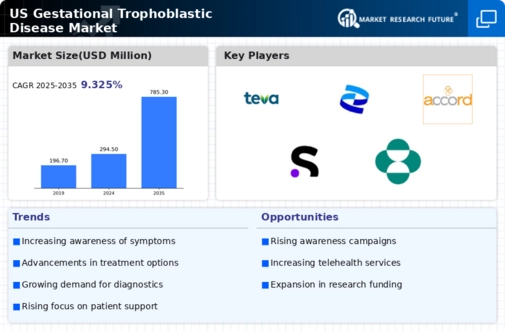The US Gestational Trophoblastic Disease Market has become a focal point for pharmaceutical companies as advancements in treatments and innovations are significantly shaping this sector. Gestational trophoblastic disease, which includes a spectrum of conditions resulting from abnormal growth of trophoblasts, presents unique challenges in terms of diagnosis and management. Analyzing the competitive landscape of this market reveals a mixture of established market players and emerging biotech firms dedicated to providing better therapeutic options.
The market is characterized by ongoing collaborations and strategic alliances aimed at enhancing research and development capabilities, focusing on the needs of patients affected by these rare diseases. With regulatory frameworks persisting in evolving, companies are also increasingly aligning their objectives to meet compliance while endeavoring to maintain competitive pricing structures.
Merck and Co has established a significant foothold in the US Gestational Trophoblastic Disease Market by offering a range of effective treatment options aimed at managing the complexities of this disease. The company excels in its robust research frameworks which have enabled it to deliver innovative solutions that positively impact patient outcomes.
The strength of Merck in this specific market is its commitment to prolonged investment in clinical trials and research that foster the understanding of gestational trophoblastic diseases. Their well-established presence facilitates strong collaborations with healthcare providers, thereby enhancing access to their therapies. Moreover, Merck’s advantage is bolstered by its reputation for a stable supply chain and a strong distribution network, which ensures that healthcare practitioners can readily access their products for effective patient care.
Novartis also plays a pivotal role in the US Gestational Trophoblastic Disease Market, offering a variety of targeted therapies tailored to the treatment of this condition. The company is recognized for its key products that include innovative pharmaceuticals specifically designed to combat the diverse manifestations of trophoblastic disease. Novartis' market presence is significant, bolstered by its strengths in research and development, as well as a commitment to improving patient access to treatments through strategic partnerships and collaborations.
Additionally, the company has engaged in mergers and acquisitions that have strategically strengthened its portfolio and expanded its reach within this niche market. As Novartis continues to invest in the development of novel therapies, its emphasis on leveraging scientific advancements positions it competitively in responding to the evolving needs within the US healthcare landscape for gestational trophoblastic disease management.















